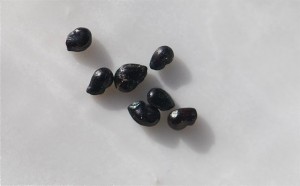This
week continued as a week of preparation. I know it seems like the preparation
phase just keeps going on and on. But, preparation is important and proper
preparation is the only way we are able to truly reach and understand our
findings once we reach our ultimate goal.
In our
experiment our ultimate goal is to study the effects of allelopathy on the
germination of seeds of plants of the lower Sonoran Desert. But, first we must
determine the conditions under which our seeds will germinate, and how long it
takes.
Materials
Paper towels
Method
1. Thoroughly wash hands, this will reduce contamination
2. Cut the paper towels to fit the bottom of the labeled Petri dish, two for
each Petri dish.
3. Put one cut paper towel into the bottom of each Petri dish.
4. Gently count and place seeds into Petri dish (# depends on species, but
should be noted)
5. Seeds should be counted twice.
6. Moisten seeds with 5 mL of DI water
7. Place lids on the Petri dishes
8. Seal lids with paraffin, careful to assure no air can get into the Petri
dish as this will alter growing conditions.
9. Repeat the above procedure; prepare five Petri dishes for each species.
10. Store the Petri dishes in an undisturbed area of the lab; note the room
temperature.
11. Check on the progress of germination at regular intervals
Next
week I hope to have some germinating seedlings!
One of
the seeds we are germinating is the Carnegiea gigantean or the Giant Saguaro. These
slow growing majestic plants have come to symbolize the state of Arizona, and yet
in the wild germination requires conditions that are not typical for Arizona.
Evidence suggests that saguaro seeds germinate after a number of years of mild
and wetter than average weather conditions. These conditions are estimated to
occur “only a few times a century” and may evolutionarily be why these plants
grow so slowly – only 1” in 15 years - and live beyond 200 years.
Growth Chart for
the Saguaro
First year
– reaches height of ½ inch
Fifteenth
year – reaches height of 1 inch
40-50
years – reaches height of 10 feet and begins to flower
75 to 100
years – sprouts arm buds and reaches height of 12 to 20 feet
100 to 200
years – can reach heights of 60 feet and weigh upwards of 10 tons
Reference:
Dimmitt, Mark,
"Cactaceae". A Natural History of the Sonoran Desert. Arizona-Sonora Desert Museum Press, Tucson.



